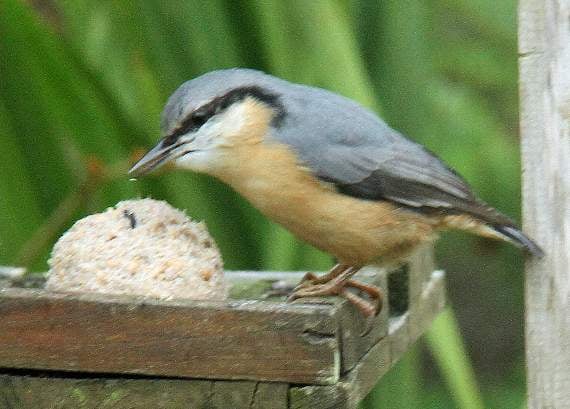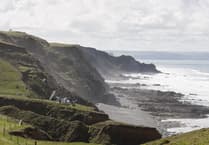Photographer Ray Roberts spots a plant whose flower only blooms for a day, on a Nature Watch walk at Clapper Bridge.....
I went over to Clapper Bridge with my son and grandson, who were down from Kent for my birthday. Beside the bridge there is a very slow running stream that joins the River Lynher and the surface was a playground for at least fifty pondskaters. I have never seen this many skaters on the water on my many previous visits to the bridge and such was the light that each skater was standing over its own reflection.
We were hoping to see a roe deer or two, so we went over to the ford beside the Warren House Plantation, but saw none. We did however find a single flax – Linum perenne – plant growing on the bottom of a grassy, weed covered bank. This plant is scarce in the wild and I was very surprised to find it as their flowers only last for a day, but it has been cultivated for at least 7,000 years for its fibre, indeed, Egyptian mummies were found to be wrapped in material made from flax some 5,000 years ago,
Linseed oil that is obtained from its seeds is used in the manufacture of paint and varnish but is probably best known as an oil for preserving cricket bats.
We saw lots of ripening sweet chestnuts on a couple of trees providing food for squirrels and there were plenty of green ivy flowers everywhere. These will ripen into black berries in late autumn to provide food for birds during the winter months. Ivy runners were once hung in cattle sheds in Scotland to keep evil away from cows and their milk and cups were carved out of the plants thick lower stems for children to drink milk from to ward off whooping cough.
There were, as usual, lots of goldenrod – Solidago virgaurea – growing near the ford but most of them were going to seed. During the 16th century in London goldenrod was much in demand medically as a herb for healing wounds caused by swords and knives. In fact, demand was so great that large quantities had to be imported at greatly inflated prices until it was found growing wild on Hampstead Heath. England’s capital must have been a scary place to live back then.
Although charlock – Sinapis arvensis – is very pretty to look at and was once a source of food, it is a very hardy, persistent weed. Growing on arable land, on waste ground and even on roadside verges it is extremely difficult to get rid of as the seeds can lay dormant for many years and then, when the ground is disturbed, the plant will grow. It appears that there are records of a fifty-year-old pasture that was ploughed and, low and behold, the field was soon turned into a golden meadow.
We got back to Quethiock and were drinking tea when a nuthatch appeared at the feeding station and started pecking at a fat ball. This bird, I assume it’s the same one, visits our garden occasionally and it is a pleasure to see.




